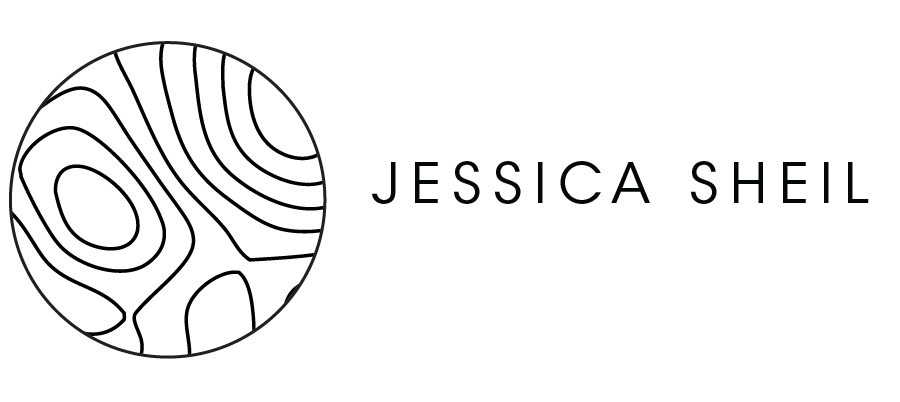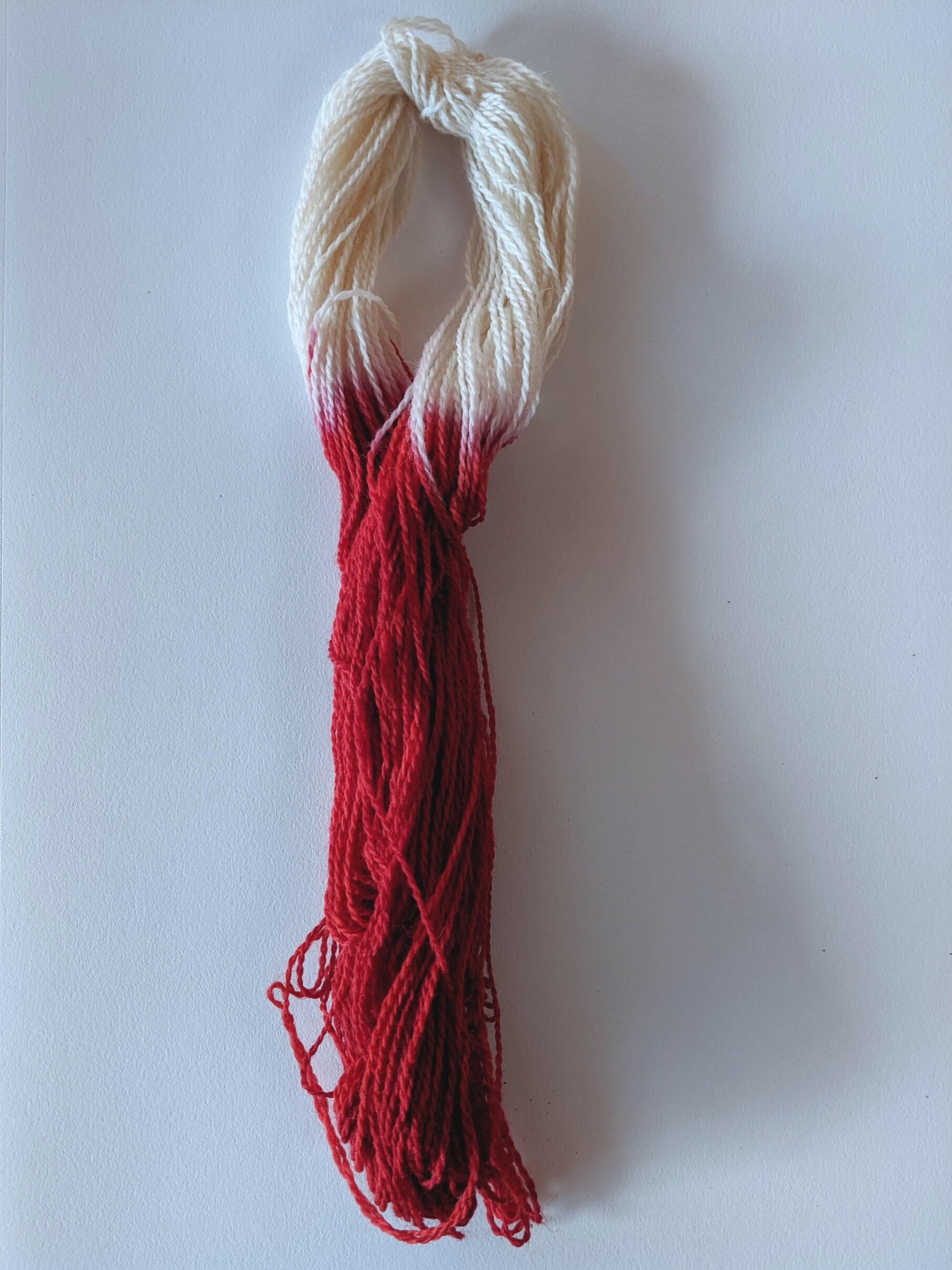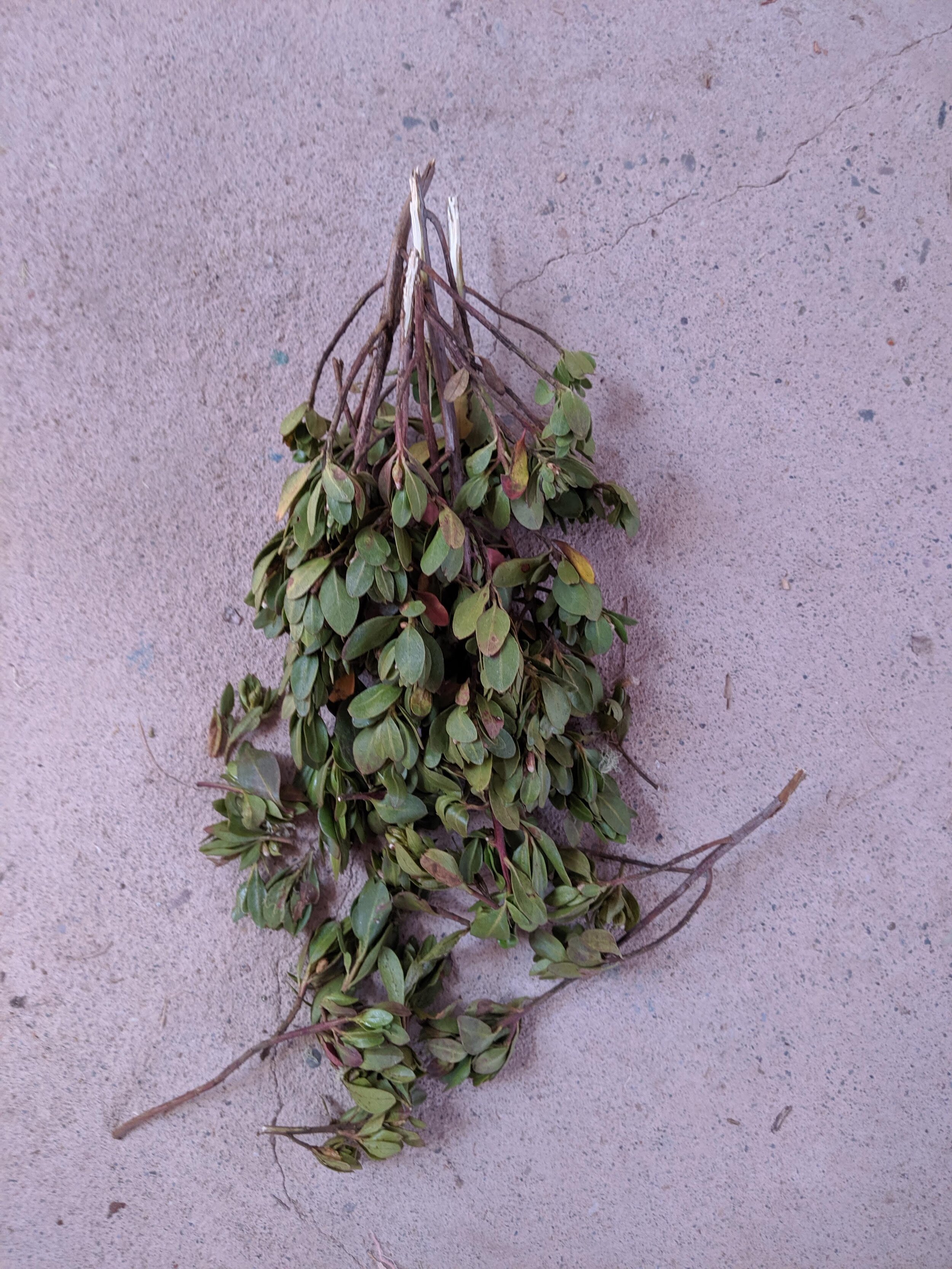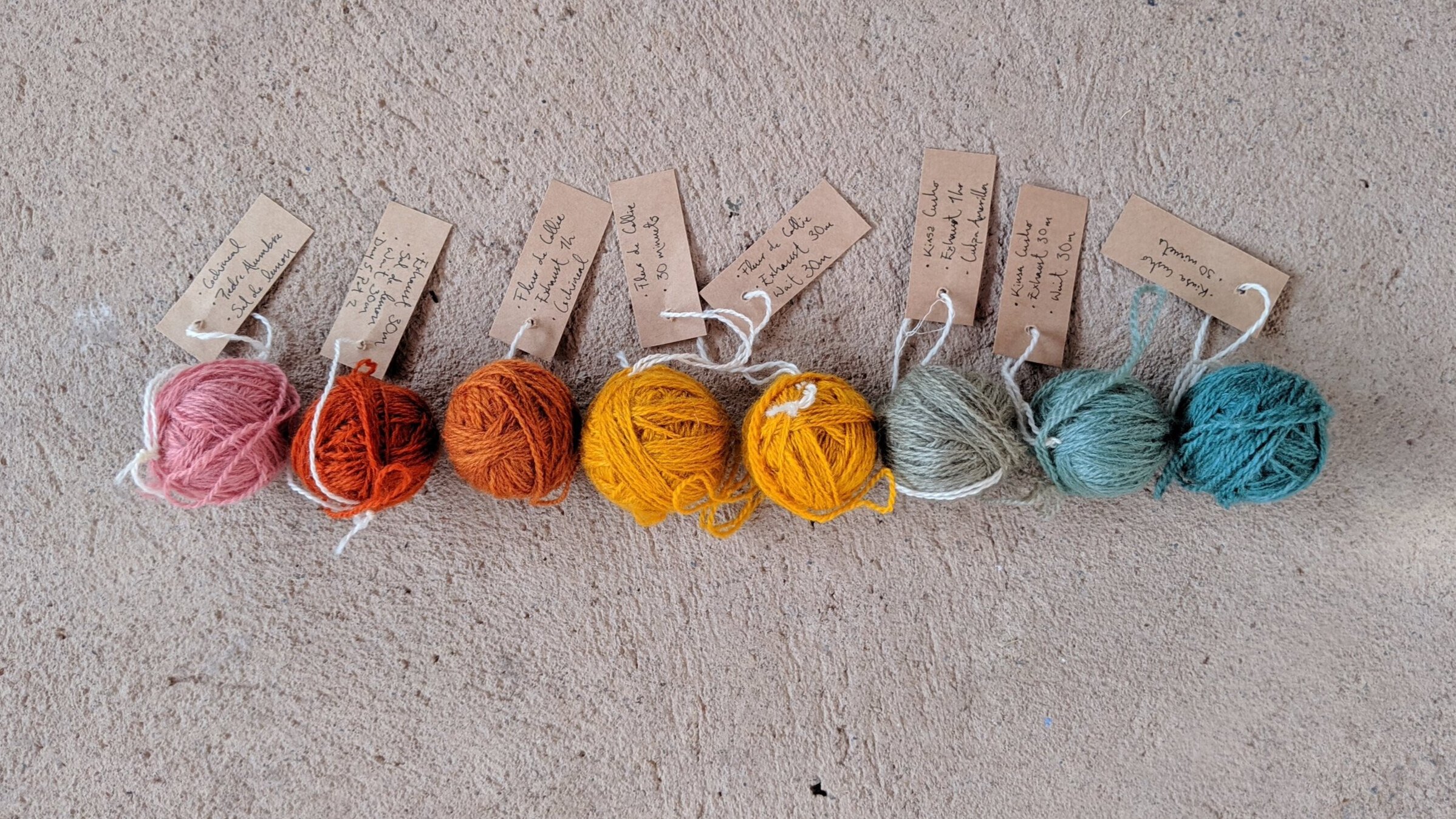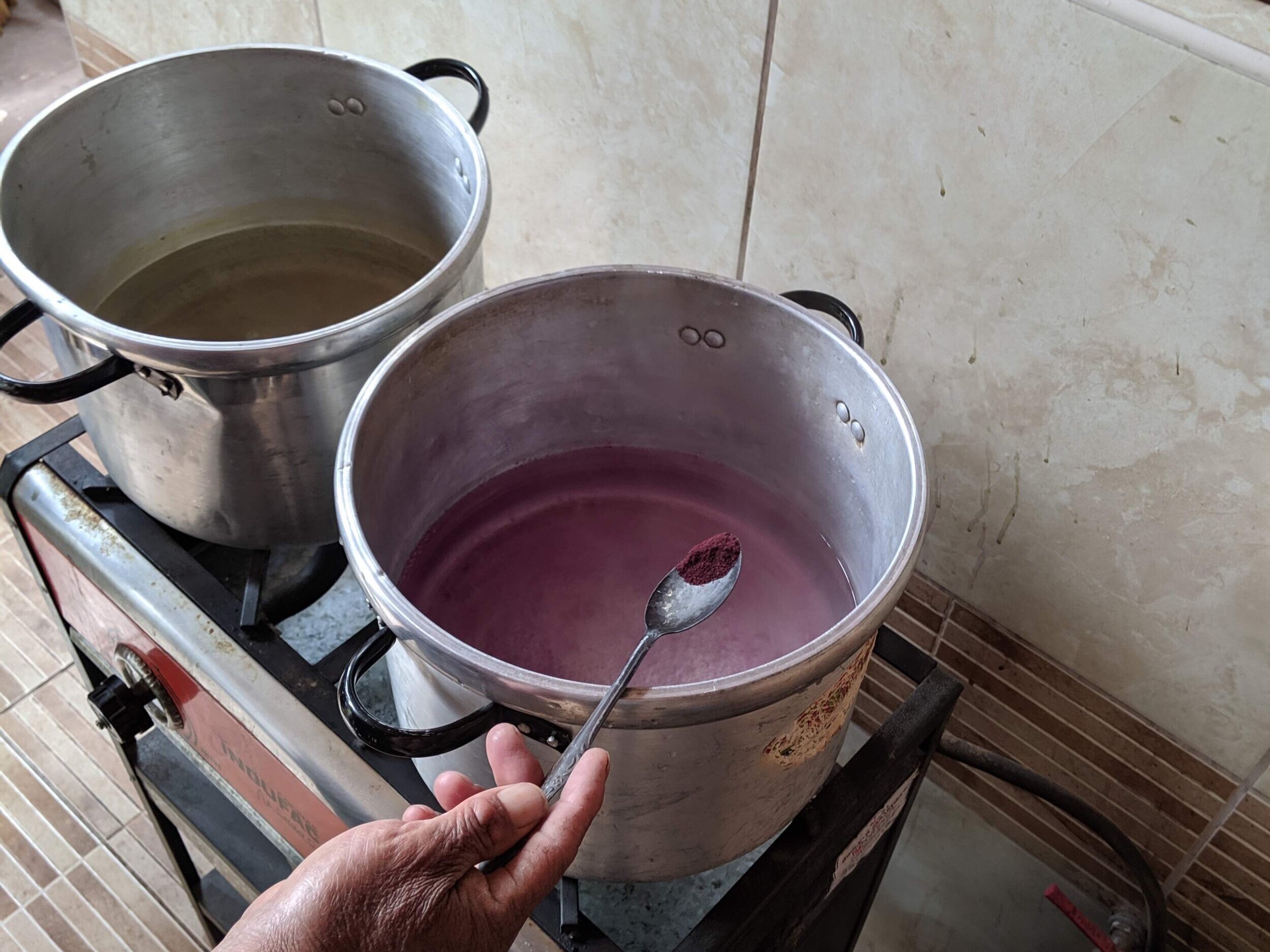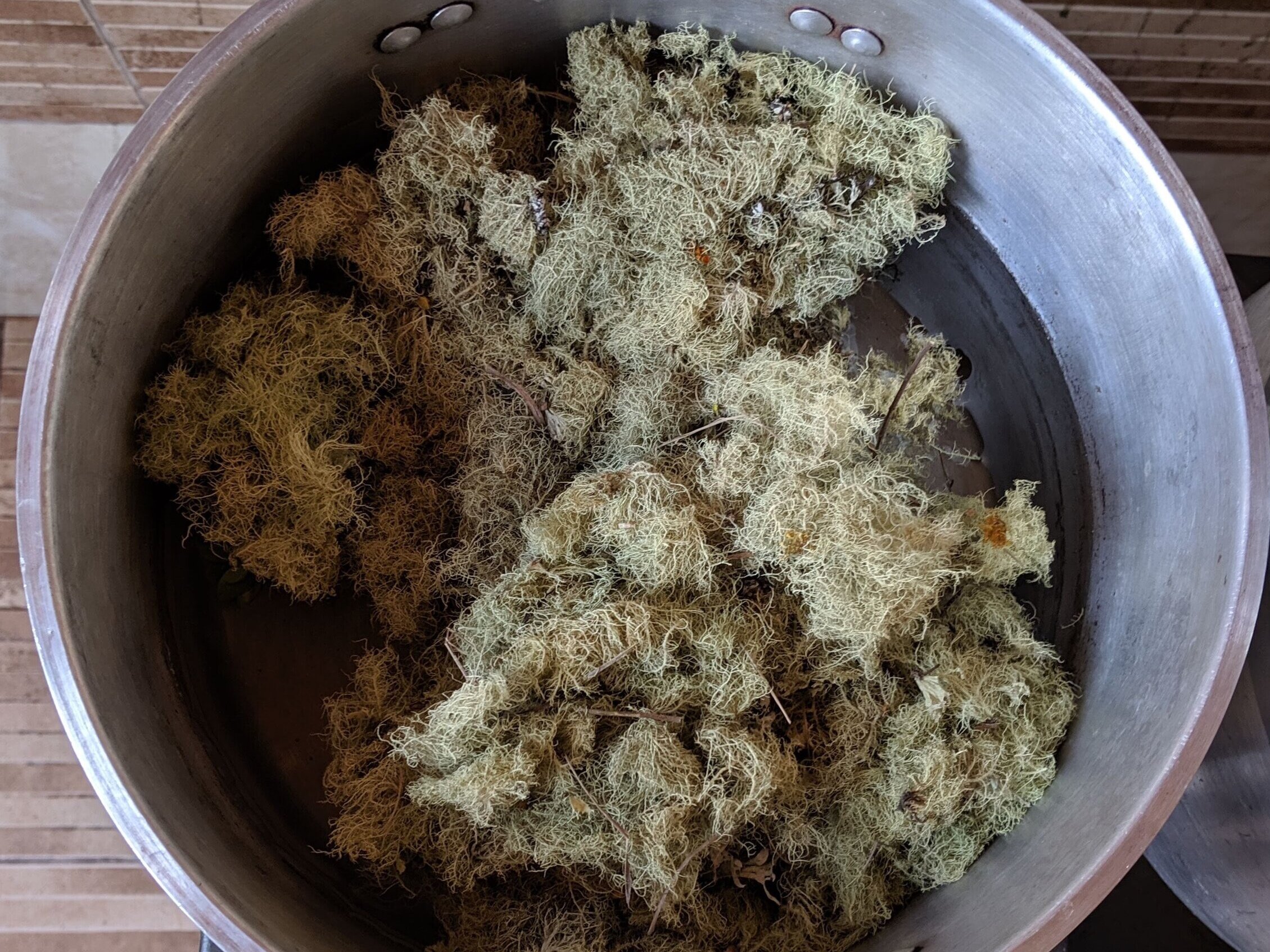I spent three weeks in Urubamba, Peru at Arquetopia Artist Residency where I learnt to dye with natural pigments from the region. Twice a week Maria, a local from the nearby town of Chinchero, would take me through creating different pigments resulting in forty unique shades.
During this time I had calls with the residency’s director and coordinator, Francisco and Nayeli. They would assign readings as well as talk through my work and concept. The conversations I had with them were precious and significant and I feel no single piece I have created would ever be able to fully summaries my learnings or experience. The series I have created focuses on one of my biggest take aways from those conversations—the intricacies of colour’s relationship with slavery.
When writing about the history of cochineal, Author Elisabeth Ives summarizes, ‘Cochineal is, in short, a perfect examples of the intricacies of history; messy, complicated, and compelling’. A perfect summary of not only Cochineal but of every colour.
This post summarizes my time in Peru and the work I made as a consequence
Experimental weaves made with sheep’s wool. alpaca and cotton
Skeins of sheep’s wool ready for dying
Shop selling pigments, Cusco
Cochineal in dried bug form
Crushed cochineal
Wool skein dip dyed using cochineal
Eucalyptus; greens and greys
Checche; greens
Ch’illka; greens
Vat 1: Ch’illka, Qollpa Amarilla, Flor de Q’olle
Vat 2: Chi’illka, Qollpa Verde
Cochineal being added to a dye vat
Qaqasunkha, a lichen found in the local mountains, being added to a dye vat
My notebook recording the recipes.
All the wool used in these pieces were dyed in Peru, but were woven over a long period of time after I returned to Vancouver. Each piece has a quote associated with it that resonated with me.
“In art, the tussle over the respective merits of dusengo (drawing) versus colore (colour) raged on through the Renaissance and, although somewhat muted, into the present day. Disegno represented purity and intellect; colore, the vulgar and effeminate”
The Secret Lives of Colour, Kassia St Clair
“The first European slavers, the Portuguese in the fifteenth century, quickly learned that to get slaves they had to trade for slaves with African chiefs and kings, not kidnap them, and they conducted this trade with colored fabrics in lieu of violence.”
What Color Is the Sacred?, Michael Taussig
“Red brought nearer to humanity by yellow”
Wassily Kandinsky, quote about orange
“…carrying what today no less than back then seems quite magical: dyes and colored velvet, silk, damask (from Damascus), muslin (from Mosul), baudekin (from Baghdad), cotton (from the Arabic qutn), taff eta (Persian, tafta, meaning silken cloth, to shine), satin (zaytuni), and mohair (from the Arabic mukhayyar, meaning choice or select).
The tongue remembers, but you do not. Life moves on while all around you lay traces of lost eras, active in the present, hanging on the wall, covering the windows, not to mention the couch on which you sit or the dress that you will wear tonight.”
What Color Is the Sacred?, Michael Taussig
“Colours, therefore, should be understood as subjective cultural creations: you could no more meaningfully secure a precise universal definition for all the known shades than you could plot the coordinates of a dream.”
The Secret Lives of Colour, Kassia St Clair
“Savage nations, uneducated people, and children have a great predilection for vivid colours”
Johann Wolfgang Goethe, Theory of Colours
